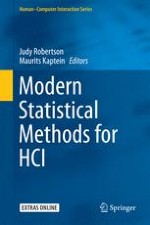2016 | OriginalPaper | Buchkapitel
12. Mixture Models: Latent Profile and Latent Class Analysis
verfasst von : Daniel Oberski
Erschienen in: Modern Statistical Methods for HCI
Aktivieren Sie unsere intelligente Suche, um passende Fachinhalte oder Patente zu finden.
Wählen Sie Textabschnitte aus um mit Künstlicher Intelligenz passenden Patente zu finden. powered by
Markieren Sie Textabschnitte, um KI-gestützt weitere passende Inhalte zu finden. powered by
Abstract
R to apply them.